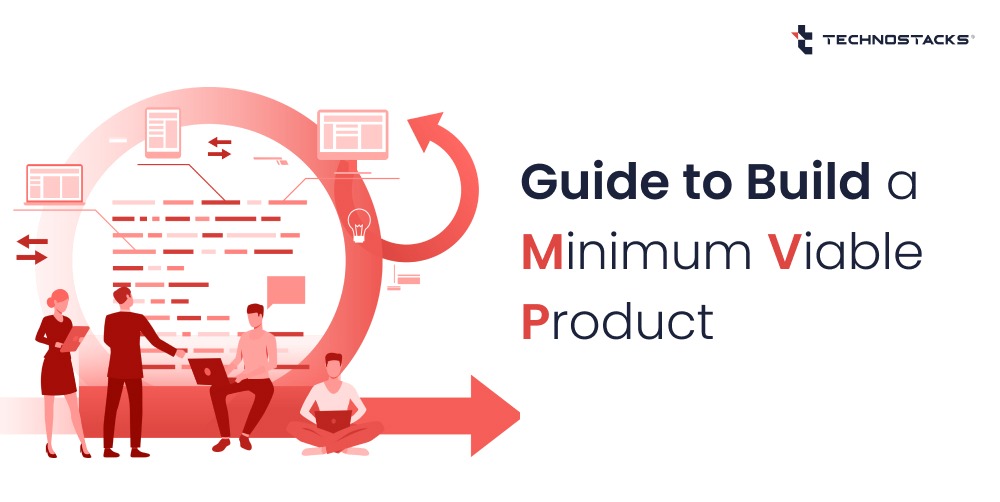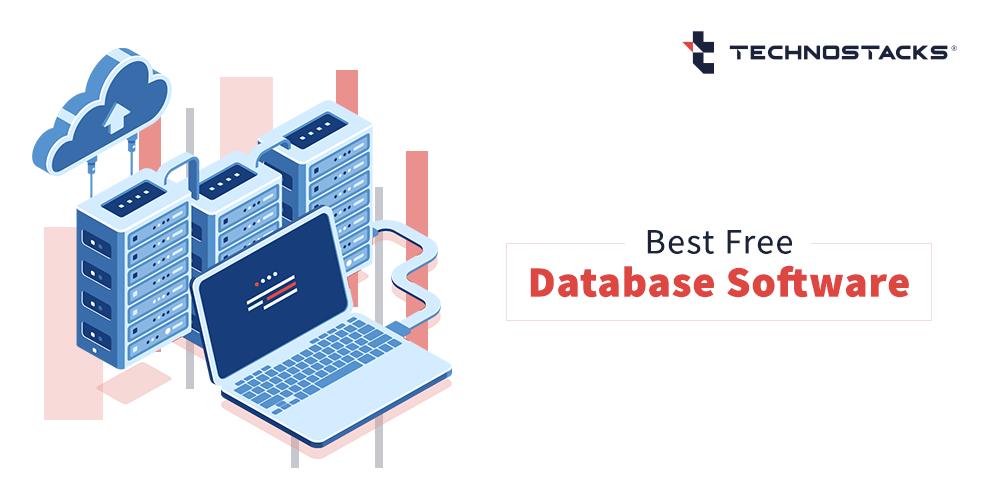A Definitive Guide to Create a Minimum Viable Product (MVP)
MVPs or Minimum Viable Products helps startups to get the feedback on their products and introduce the world to their brand without hassle.
Building a product or service can be a risky and expensive endeavor. You are trying to make something new but are unsure whether people will like it or reject it. What if they do reject it? Nobody wants to spend time working on a product that no one wants.
You need a quick way to turn your ideas into reality so they can be tested on real customers without any risks involved.
MVP is important for any kind of app development because it is the main pillar to test your product before launching.
Here we will discuss about how to create minimum viable product and the best way to launch it.
What is a Minimum Viable Product?
A Minimum Viable Product or MVP is a basic, launchable version of a product that has minimal must-have features that are predefined in its value proposition. An MVP is built to enable faster market time, achieve product-market fit, and attract early adopters.
What is the purpose of an MVP?
Building an MVP is to launch the product quickly with a small budget based on an already set idea. MVPs allow businesses to collect user feedback for the initial product that can be improved in future iterations. With one Minimum Viable Product, businesses can find their right target audience, save time in production and implement new ideas based on feedback.
Reasons to build an MVP
When looking into MVP development, you create a safety cushion that helps build adequate products that meet market needs. Here are five reasons to build an MVP:
- Testing an idea and getting feedback
You may build the best product in the world, but if a single person does not find any value in it, it will not work. Your product has to be unique and respond to market needs.MVPs help test your hypothesis without wasting resources. It aids in building early user bases to collect relevant feedback. Potential customers can tell you what they feel about your products and features, what is lacking, and what they want to see in your product.
- Attract investors and clients
With the help of an MVP, you can build a solid user network and showcase your products to investors.Read More:- How To Develop An IoT-Based Minimum Viable Product
- Improving development time
An MVP is a great way to increase development efficiency. On the one hand, the feedback you get will help reduce any idea distractions. On the other hand, knowing what your target audience wants can expedite the process and optimize the development process. - Build the best product with minimal waste
When we talk about an MVP development process, it needs to be the best product, with minimum investment and minimal waste. With a proper direction, there is less guessing, which means fewer resources are wasted in the development process. By having the MVP features predefined and recognizing the ones with low utility initially, you can turn your idea into a successful project on a minimal budget. - Reducing time-to-market
With the rollout of an MVP, you can build, measure, and learn about your product viability faster. You can analyze your target market reactions and understand whether the product will be a hit or a miss. Ultimately, the final version will be polished, fulfilling the requirements of both investors and users.
Types of Minimum Viable Product
- Concierge MVP
Concierge MVPs manually help users accomplish their goals to validate whether they need your product or not. One of the best examples is the app Food on the Table. Manuel Rosso did not have a product or a website because he was selling a service for $10 a month that generated individual shopping lists tailored to suit a user’s need. - Wizard of Oz MVP
This MVP gives the impression that it offers a solution to your problem from the outside, but the inner workings are different. One of the best examples is one of the leading Q&A services provider companies that route questions to other users (who are experts) via their Instant Messaging route.In the initial days, the company staff would manually post the questions to people online to see who would reply and then post the answers manually. There was no algorithm in place. The product was later created to include algorithms and matching functionality.
From the outside, the MVP looked like a fully functioning system, but in reality, all tasks were done by humans.
- Email MVP
Creating an email takes less effort than building a product or even the features of a product. When you have existing customers, you can manually create emails to see if they respond favorably or not. Once you get the feedback, you can proceed to build the related product.If you see people opening the email but not clicking on the CTA, that means they are not convinced with the Value Proposition.
- Landing Page MVP
We all know that a landing page is one single page that:
● Describes your product or service
● Illustrates your product advantages
● Contains a CTA button that interested visitors can click to read more - Software Prototype
A software prototype is more complex but is one of the most common MVPs. It requires software to be built with just the core components.Most MVP software is made using agile development. This flexible process involves discovering and developing through collaborations, followed by continuous improvements. Scrum frameworks are some of the best examples of agile development.
- Product Designs
There are multiple ways to use product designs as an MVP. Most of these are useful for mobile apps, software, and other tech tools. One of the easiest options is to sketch the product using a tool or by hand. Offering more complex designs is a wireframe that shows options like user experience, navigation, and hierarchy. - Demo videos
Through demo videos, you can highlight the features of your product, what it does, and the thought behind it. Showing videos give potential customers an insight into what your product can do and how it can help better their lives. - Piecemeal
To create piecemeal MVPs, entrepreneurs combine multiple components from the tools already available to showcase how their products work.
Examples of Minimum Viable Product
Some of the most successful MVPs once started as startups. While you have heard of them, you may not know that they all began as MVPs. Here are some of the best examples of Minimum Viable Products:
- Dropbox
Dropbox started with a simple demo video MVP explaining the benefits of storing data in one place. The feedback from users helped the then-startup get funds to develop the software. - Amazon
Most know that Amazon is an online bookstore. But, you may not know Jeff Bezos started buying books from various distributors and shipping them directly to customers once he got an order. With higher book sales, it meant to keep adding products, acquiring warehouses, and adding users with a personalized experience on the website. - Groupon
Groupon has become a huge platform that operates around the globe. But it began as a piecemeal MVP that promoted the services of local businesses. Because the founders could not create their content management system, they first used a WordPress blog. Once they were successful, they scaled the venture. - Airbnb
Airbnb started with the founders’ very own apartment. The concept began with listing a room for a short-term rental agreement to earn extra money. When it became clear that people were willing to stay in someone else’s home when traveling to save money, the platform grew from there. - Facebook
Facebook started as a simple social media tool to connect with friends. The initial profiles were very basic, and only students from Harvard university were allowed to use the platform. The idea was a success, and the platform moved to include more complex features.
How do you create a Minimum Viable Product?
Before planning the launch of MVPs, you need to prepare a step-by-step guide to build a MVP so that all your teams are on the same page. This helps iron out any strategy or development issues that may arise:
- Define the problem you want to solve
It is easy to get caught up in particular product ideas and forget the initial problems it intends to solve. But, if you build successful businesses, you cannot build a product you want – it has to be something your people need. - Finding the best solution
Once you have the problem in mind, it is time to start planning the solution. When developing an MVP, you will find the mapping out of the elaborate functionality or the new features.But the problem is that creating all the functionality takes money and time. So, to muster the resources to develop the perfect product, there is a huge risk that nobody will use it.
- Start your market research
In certain aspects, your idea may not fit the market needs. But before a business initiates an idea and builds an MVP development process, it ensures that it fulfills the target users’ requirements. Businesses can gain this information by conducting surveys.The more information a business gets, the higher chances there are of success. Also, keep an eye on what your competitors offer and how much your products can stand out.
- Ideate on value addition
What values do the new product offer? How does it benefit them? Why would the user buy the product? All these answers can help define the app’s value proposition. It should be clear what the essential estimations are for your product.As MVPs imply, the product has to create value for the people in its basic state. Begin the outline with the users and build the MVP based on their requirements.
- Map out the user flow
The design process is the most vital stage in building an MVP. So, you must design an app that is convenient for users. So, businesses must look at the app from a user’s perspective. Start with the app installation to the final process, such as making a delivery or purchase.Additionally, user flow is important because it will not be missed while keeping in mind the future of the product and user satisfaction.
- Prioritize your product features
In this stage, prioritize all features that your MVP will support. To prioritize the features, ask questions such as:● What do your users want?
● Is the product offering them something beneficial?Now, the remaining MVP features are categorized based on higher priority, medium priority, and lower priority. Another essential guideline for creating a minimum viable product is to arrange the product backlog features.
But it is time you need to begin building an MVP. If businesses want to see how a future product looks, create an MVP prototype.
- Forget about efficiency
To grow, your final MVP needs to be efficient and scalable. But this is not your finished product, and at this stage, you cannot afford to develop your MVP in an inefficient and unscalable way. Efficient processes are developed later. For now, test your fundamental assumptions. - Launch your MVP
Once businesses decide upon the main features and learn about marketing needs, it helps create the MVP. But remember that an MVP should not be a product of lower quality than the final product but still completes the customer’s needs. So, it must be engaging, easy to use, and suitable for the users. - Build, Measure, Learn
Your MVP is not the end goal; it is another stepping stone. You are not trying to generate a fortune in revenue, but at the same time, you are not scaling your business as quickly as possible. Instead, you need to maximize your learning.Once your MVP’s features are mapped out, you must start developing.
- Persevere or Pivot
In some instances, user feedback helps reaffirm your beliefs and helps prove that you are heading down the correct path. Sometimes, it will also tell you that you have misfired and are heading in the wrong direction.These insights may be painful but are crucial to building products that people need. After all, you are building a product that people will want to use. Without testing, you do not need to know what the products look like.
So, when you launch an MVP and realize that you have taken a wrong turn, then do not worry; your failure is a little closer to success.
Benefits of Minimum Viable Product (MVP)
If you are not convinced about how to create minimum viable products or why you should, here are some benefits of Minimum Viable Products:
- MVPs are lightweight
It will take fewer resources to make and at lower costs. This means they can showcase the same functionality as your final products without needing the complete finished product. - Making an MVP saves time
Most MVPs can be made in a few days or a few weeks. If development lasts longer, you can remove some extra features until the development time reaches its goal. - You have a clear goal defined
You can decide what to make, how to make it, and nothing more. There is a clear definition of what needs to be done. So, there is less risk, and the project is completed in the stipulated time frame.
Realistically there are no downsides to building an MVP. The worst thing that can happen is that it is not what your users want. You can scrap the plan and go back to the drawing board. But, even in that case, it is better to build an MVP prototype than to spend time and money building the final product.
Mistakes to avoid while creating MVP
The total MVP development process allows leaders to test their product value without spending time or money. But, when looking at ways to build a Minimum Viable Product, there are some mistakes you need to avoid:
- Choosing the wrong problem to solve
Before spending time, money, and energy developing a product, the initial steps determine whether the product is worth it. Once you analyze the pain points, then you need to ask yourself these questions:
● Who is it for?
● What will the problem solve?
● Is the proposed idea a good solution to the problem?If the intended target for your MVP is everyone, then you will get no users. So, find the right target audience first and start building your product. If your product is not helpful, it will not connect with the right audience.
- Do not skip the MVP phase
Imagine building a machine without a design. It is impossible, right?Jumping straight into the development process without a defined requirement or process is very tricky. A vital aspect of product development is the evolution of the idea from a unique concept to a fully functioning product.
Between the idea and a full-fledged product is your MVP. Building an MVP helps visualize the user experience of your product.
- Targeting the wrong audience
Once you are ready with the MVP, it is time to validate your product with testing. At this stage, you need to get comments and feedback from your audience. But, not everyone will be your target user. Do not ask relatives and friends for feedback unless they fall into your potential users’ category. Any irrelevant comments could lead to wrong decisions and wrong directions. - Feedback is very important
When building an MVP, it is important to understand that the end-users are the ones who can tell you what needs to be kept and what needs to be removed. Once businesses collect feedback, you can start improving the products. This process needs to be repeated until the final product is ready. - Your development method is inappropriate
One of the biggest reasons companies abandon their projects is jumping into the development process without understanding the proper method. If your process is inappropriate, you will not get the right product.
Key Takeaways
Creating and building an MVP is more about strategizing and analyzing rather than jumping into the complicated product development stage. Once you have everything in place, you can showcase it to users and investors to see if the product works.
Planning your MVP stages, such as conception, testing, prototyping, and feedback, are very important. Without these, your final products will not work well in the market.
If you are planning to develop an app and confused about how to create minimum viable product, then contact us. We at Technostacks, will provide you with correct solution regarding for MVP plan.
FAQs on Minimum Viable Product (MVP)
- How do you create an MVP?
You can build your MVP prototype with the following steps:
● Conducting a thorough market research
● Know what value your product offers
● Align the product value with user flow
● Prioritize features that help your user - What is the first step to building MVP?
The first step to building an MVP is to find a problem your target audience faces and create a product or service that will help reduce that problem. - What is an example of a minimum viable product?
The prime and precise example of a minimum viable product is Dropbox. The concept was first created as a video explaining the features. Once people started providing feedback, the software was developed.
- How long does it take to build an MVP?
Building an MVP depends purely on the complexity of the design, the features, and the resources required and available. Normally it may take anything from a few weeks to a few months, depending on the project size.
- Why should you create a Minimum Viable Product?
Creating a Minimum Viable Product helps validate the idea in the early developmental stage by attracting potential customers. Using an MVP, you can understand if your project is going to succeed or if it will fail. MVPs are also cheaper to make and have the basic features to showcase to users and investors.
- What are the challenges in creating a Minimum Viable Product?
Some of the most common challenges faced when creating an MVP are:
● Failing to identify the right audience
● Failing to identify the requirements of your audience
● Hiring unskilled or amateur developers
● Choosing the wrong methodology
● Choosing the wrong technology
● Trying to perfect the MVP in one go - What are the steps to follow for creating a Minimum Viable Product?
Here is a step-by-step guide to building an MVP:
● State the issue you want to resolve
● Find a straightforward approach to resolve the issue
● Start your market research
● Ideate Value addition
● Map out the user flow
● Prioritize your product features
● Forget about efficiency
● Launch your MVP
● Build, Measure, Learn
● Persevere or Pivot - What things to consider while selecting a market for MVP?
When considering a market for your MVP, here’s what you need to know:
● Understand the market
● Understand your competitors
● Articulate your MVP positioning
● Define your objectives
● Choose your channel wisely
● Narrow your focus
● Bigger is not better
● Tell the Right Story
● Do not forget your pitch deck - How to market a Minimum Viable Product?
Five tips for marketing an MVP:
● Target communication is key
● Don’t forget digital marketing
● Explain your MVP thoroughly
● Talk about credibility
● Measure your success and failure - How to launch an MVP product?
When planning your MVP launch, here’s a checklist you can follow:
● Make sure your product is ready for outliers
● Make sure testing is complete
● Your product should be ready for real-world usage
● Your process has a completely defined lifecycle
● Your data strategy will prove or disprove the viability of your MVP - What are the steps coming after developing an MVP?
Once you develop your MVP, the next three major stages are:
1. MMP or Minimum Marketing Product – Where you test and upgrade your MVP to keep it up to the market standards.
2. MLP or Minimum Lovable Product – Start with designing an appealing user experience and generate the wow factor.
3. MMF or Minimum Marketable Feature – Here, you make the product more appealing to investors.








